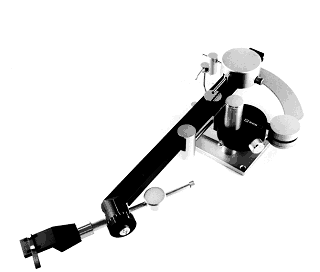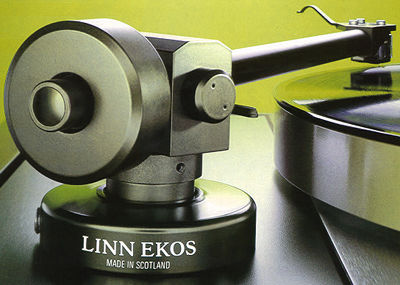Sure, it’s a beautiful nation, but it’s not the first location that comes to mind when you think of hi-fi pickup arms. New Zealand, on the other hand, is full of surprises, including the Design Build Listen Wand tonearm. Designer Simon Brown has created an intriguing product that reminds us that there are few new tonearms on the market – from Regas to SMEs, most tonearms on the market now had their origins in the 1980s. He jokingly remarks that the Wand is “not your grandmother’s phonograph,” emphasizing how modern the design is.
The thick 22mm carbon fiber tube with an integrated headshell – or, to be more precise, cartridge mounting assembly – is, of course, the centerpiece. Of fact, the headshell is a common cause of tonearm misery, so it makes sense to remove it – while it is true that installing and removing cartridges is more difficult than with, say, a SME 309. The fact that there is no need for a finger raise is a great touch, as the end of the armtube (nee headshell) provides this capability.
The integrated bearing housing and counterweight at the other end of the arm are equally attractively but simply done. The bearings are held in place by a hefty 50mm stainless steel billet with a cutout for the pillar and an adjustable plate on the end to balance the arm. This can be modified to a higher or lower mass to match the cartridge being used, and it also essentially means the counterweight is underslung below the bearing pivot to help the arm ride warps better.
This tonearm isn’t the easiest to set up or operate, but once it’s dialed in, it tends to stay that way – and the stainless steel tool included with the arm makes getting there a lot easier than it would be otherwise. It elegantly combines the operations of an alignment protractor, a height gauge, a cartridge alignment jig, and a spanner; its simplicity belies its might, much like the arm itself! The Wand’s single-hole mounting can be used with a variety of nicely finished mounting plates from SME, Rega, and other manufacturers. There are other wiring choices; I used the Cardas method.
This arm sounds clear, sharp, and elegant when mounted on a Michell GyroDec. You don’t necessarily connect unipivots with a lightning-fast and snappy bass, but The Wand was unexpectedly light and beefy down low. It doesn’t have anaemic bass, which can be a problem with this sort of arm, and instead delivers a solid, sturdy bottom end with minimal overhang. While it isn’t the absolute best money can buy, it is exceptional for the price. This image extends into the midband, where we discover a clear, expansive soundstage with a lot of detail. In this regard, it sounds rather Rega-like, as opposed to the more romantic Hadcocks of the past. The treble is expansive and fluid, which is better than one might anticipate from a budget unipivot, which often sound hazy and foggy.
The Wand resembles a tighter, tauter, leaner Roksan Nima in some aspects – another superb modern unipivot. It moves at a breakneck pace and has a melodic clarity that makes you marvel at the depth and clarity that only vinyl can provide. It resolves the timbre of acoustic instruments very well for a device that costs around £500 in the form tested, and it does so without sacrificing other components of the music. It has a warmer midband than a Rega RB251, and it transmits small phrase inflections better. The major flaw is its soundstaging, which is wide left-to-right but doesn’t fall back as well as comparable Rega, Roksan, or Jelco arms.
Overall, Design Build Listen has created a daring initial tonearm. It’s the best-built and-looking product of its kind at the price point or close to it, and it also delivers excellent sound quality. The main drawbacks are those that are characteristic of the type; unipivots are laborious to set up and use, and the lack of a cueing lever (in normal form) only complicates things for some. You’ll think The Wand is magical if you’re looking for the best performance at the best pricing.







